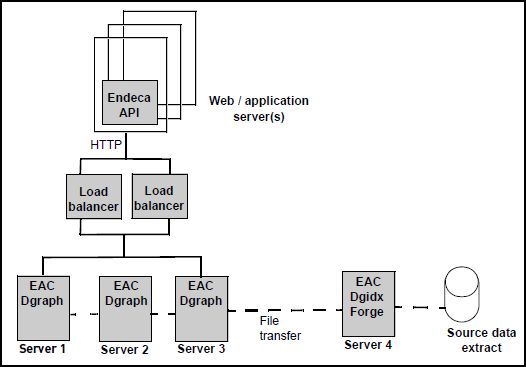In this example system architecture, a medium implementation that requires higher query throughput is made up of four servers and two load balancers.
To achieve higher throughput, servers 1, 2, and 3 all run mirror copies of the MDEX Engine. This level of redundancy provides faster throughput by load balancing the incoming queries over a greater number of MDEX Engines. If either load balancer or any MDEX Engine should fail, then the redundant load balancer and remaining MDEX Engines handle all queries. Server 4 runs all the offline processes including Forge and Dgidix.
The advantage of this scenario is that overall throughput and redundancy is high. Each MDEX Engine runs on a dedicated server, so the servers do not need to share resources for Forge processing and indexing. Also, this scenario employs two load balancers to reduce potential offline time if one balancer fails.
The disadvantage of this scenario is that the implementation operates at reduced throughput if any MDEX Engine server fails. However, a single server failure has less effect on the implementation than the previous examples because the MDEX Engine has been replicated more times than in previous examples.


